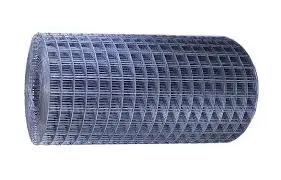robot safety fence
11月 . 21, 2024 00:12
Understanding Robot Safety Fences A Critical Component in Industrial Automation
As industries increasingly embrace automation, the integration of robots into manufacturing processes has become a common practice. While robotics can significantly enhance efficiency, productivity, and precision, they also introduce risks, particularly when interacting with human workers. To mitigate these risks, the implementation of robot safety fences has emerged as a crucial safety measure in industrial environments.
Robot safety fences serve as physical barriers that delineate safe zones around robotic systems, protecting personnel from potential hazards. These barriers can take various forms, including solid walls, transparent panels, or removable fences. The primary purpose is to prevent unauthorized access to dangerous areas where robots operate, thus minimizing the likelihood of accidents.
One key benefit of robot safety fences is the reduction of workplace injuries. In an environment where heavy machinery and robots are in operation, the potential for accidents is significant. Factors such as robotic arm movement, payloads being lifted, and high-speed operations can lead to dangerous situations for nearby workers. By implementing safety fences, businesses can create a secure perimeter that helps safeguard employees from unintended interactions with robotic systems.
Moreover, robot safety fences also contribute to compliance with industry safety standards and regulations. Organizations such as the Occupational Safety and Health Administration (OSHA) and the International Organization for Standardization (ISO) have established guidelines designed to protect workers. By adhering to these regulations through effective fencing solutions, companies not only enhance safety but also reduce the risk of legal liabilities and fines associated with non-compliance.
robot safety fence

Furthermore, the design of safety fences can vary based on the specific needs of the operation. For example, in environments where visibility is a concern—such as when monitoring robot performance—transparent panels may be used. These allow workers to maintain sight lines while still providing a necessary protective barrier. In contrast, for applications requiring robust protection against larger robots or more hazardous activities, solid walls may be more appropriate.
Another aspect to consider is the integration of safety fences with modern technology. Advanced systems can be equipped with sensors and monitoring devices that detect the presence of personnel within restricted zones. This technology enables automatic shutdown of robotic operations if an individual breaches the safety perimeter, thus providing an additional layer of protection.
However, the effectiveness of robot safety fences extends beyond mere physical barriers. It's essential that staff receive proper training on the importance of these safety measures and how to work safely alongside robotic systems. Training programs should cover not only the operation of robots but also the procedures for safely navigating around them, especially in environments where fences are in place.
In conclusion, robot safety fences are an indispensable element of modern industrial automation. They protect workers, ensure compliance with safety standards, and can be adapted to meet specific operational needs. As industries continue to evolve and integrate increasingly advanced robotics, the importance of maintaining safe work environments through effective safety measures, such as robot safety fences, cannot be overstated. Investing in these solutions is not just about compliance; it's about fostering a culture of safety and responsibility in the workplace.




















